All dogs are smart.
At least when compared to jellyfish, turkeys, and some other dim-witted critters.
But there are nearly 200 AKC-recognized dog breeds, and some are clearly brighter bulbs than others — a fact which sparks quite a bit of interest among owners.
This leads many pet parents to wonder where their dog’s breed falls in the hierarchy of canine intelligence.
We’ll try to explain how sharp or dull your doggo is below, by sharing 25 of the smartest dog breeds, as well as some of those holding down the bottom of the list. We’ll also outline some of the ways by which canine intelligence experts have arrived at their rankings and discuss why owning a super-smart dog breed isn’t always ideal — especially for some situations and scenarios.
Let’s jump right in.
The 25 Smartest Dog Breeds: Key Takeaways
- Determining the intelligence of different dog breeds can be tricky. Not only does the term “intelligence” mean different things in different contexts, but dogs obviously can’t take the same kinds of intelligence tests that people can.
- Nevertheless, some authorities have designed tests to help us interpret the mental abilities of different breeds and organized the results in an ordered list. We’re primarily using the research of Stanley Coren to inform our discussion below.
- A few of the smartest dog breeds include the border collie, poodle, and German shepherd. But we discuss the intelligence of more than 25 breeds below (we also talk about a few of the breeds at the opposite end of the spectrum).
How Do You Determine If a Dog Breed Is Smart?
You obviously can’t just hand a dog a standardized IQ test and expect him to fill it out. And even uniquely designed dog IQ tests fail to account for the specific areas in which canine intelligence can excel.
Aside from the whole illiteracy thing, there are simply too many variables at play.
For example, different breeds exhibit different types of intelligence and varying aptitudes for different tasks. And then there’s the motivation factor — humans may be willing to take a standardized intelligence test, but your Lab probably isn’t.
For that matter, it’s not even easy to define what canine intelligence really is. Psychologists still debate the finer points of human intelligence, so it’s no surprise that things are a bit trickier when it comes to our pets.
Luckily, Stanley Coren, a professor of canine psychology, came up with a ranking system for sorting out the crème de la canine crème, primarily based on the working ability and obedience different breeds exhibit.
Coren surveyed dog obedience judges to rank a number of breeds in his book The Intelligence of Dogs. Later, he added owner input to the equation in an updated version.
Do note that to be included in the study, breeds had to be recognized by the AKC.
This seemingly basic criteria actually leads to a few key omissions, as some relatively newly recognized breeds are absent from his list (like, for example, the Leonberger and boerboel).
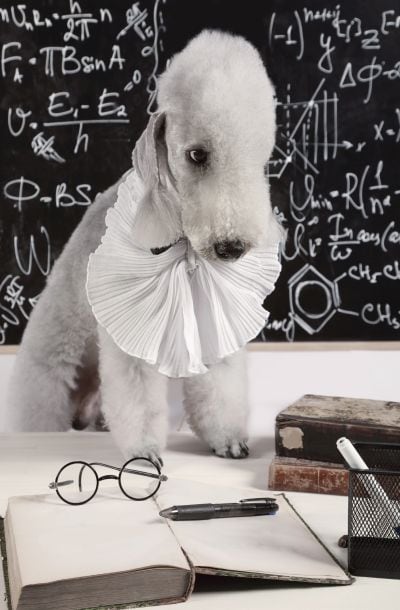
We’re basing the rankings shared below on Coren’s book, as it’s likely the most important popular work on the subject.
Coren broke different breeds down into neat subgroups, making it easy to compare them to one another and get the info you want at a glance.
The categories he created are as follows:
- Brightest dogs: Reserved for the most intelligent four-footers, these dogs learned a new command within five repetitions and obeyed a command upwards of 95% of the time when first asked.
- Excellent working dogs: Dogs in this group learned a new command within 5 to 15 repetitions and obeyed a command upwards of 85% of the time when first asked.
- Above average working dogs: These bright if not brilliant pups learned new commands within 15 to 25 repetitions, and they obeyed new commands at least 70% of the time when first asked.
- Average working dogs: These average Joes and Joannes learned a new command with 25 to 40 repetitions and obeyed commands 50% of the time or better when first asked.
- Fair working dogs: These breeds required 40 to 80 repetitions to learn a new command, and they obeyed these new commands 30% of the time when first asked.
- Lowest degree of working dogs: The poorest-performing subgroup, these dogs needed 80 to 100 repetitions to learn a new command, and they only obeyed the common roughly 25% of the time when first asked.
For example, suppose you sat with a German shepherd and taught him a new trick. It might take him less than five repetitions to learn it because he falls in the brightest subcategory. Conversely, it may take a mastiff over 80 repetitions to learn that same trick as he rests in the lowest tier.
Another example would be asking a golden retriever to “Drop it.” Being in the top subcategory, he’ll most likely listen right away. But a bloodhound, on the other hand, would only be 25% likely of responding the first time you ask him to do something, as he resides in the bottom intelligence tier.
The 25 Smartest Dog Breeds
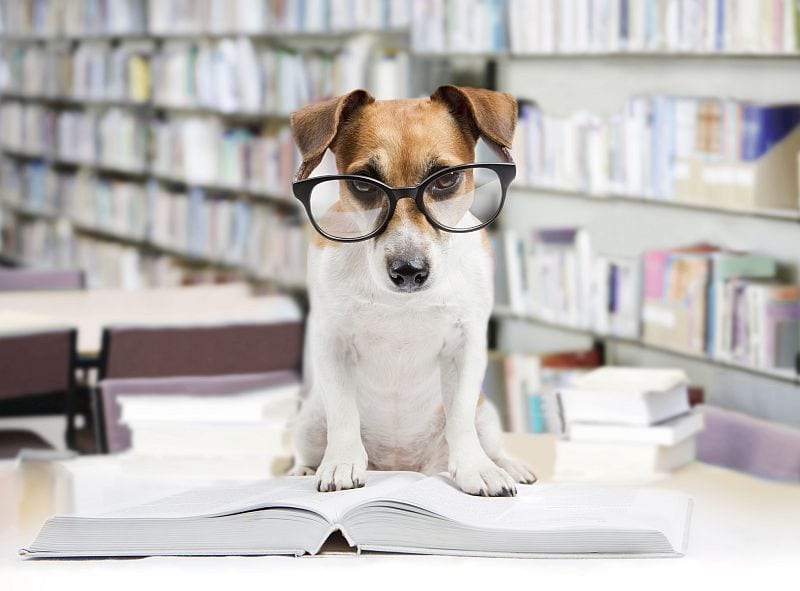
Now that we’ve outlined the way Coren measured the intelligence in dogs, we can move on to the rankings (which is undoubtedly what you’re here for).
But let’s get something out of the way first: A dog’s intelligence does not determine his worth or value as a companion — all dogs are deserving of love, respect, a good home, and plenty of scritches.
So, try not to get too hung up on these rankings if your dog doesn’t appear on the list below. There are exceptions to every rule, and you might just have an exceptionally smart beagle at home, just like someone else might have a poodle who struggles to learn basic obedience.
Also, smart dogs aren’t always as fabulous as they sound, as we’ll detail a little later.
1. Border Collie
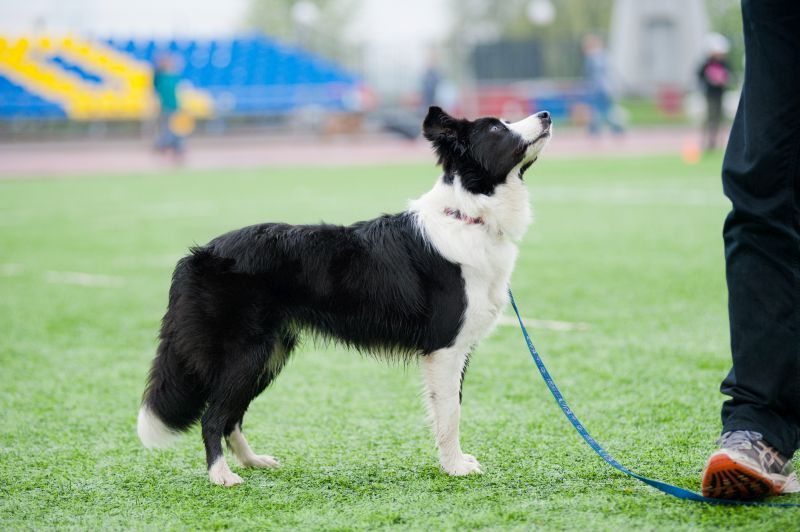
Bred to herd livestock on rough terrain, the border collie’s ability to think on his feet and overcome obstacles is unrivaled in the canine world. Border Collies are an excellent dog breed for agility competitions, obedience, and herding sports, where his quick-thinking often leads to high marks and championships.
His brilliance is, however, a double-edged sword, as he can get into loads of trouble if he’s bored and left to his own devices. So, you’ll need to keep plenty of interactive toys handy and tire him out before any periods of alone time.
The border collie’s brainpower is matched by his tremendous energy and working drive. He is not a couch potato by any means, and he requires plenty of daily physical exercise and mental stimulation to prevent destructive behaviors from manifesting.
Frequent long hikes and adventures are recommended, along with a sport or job to keep him occupied.
2. Poodle
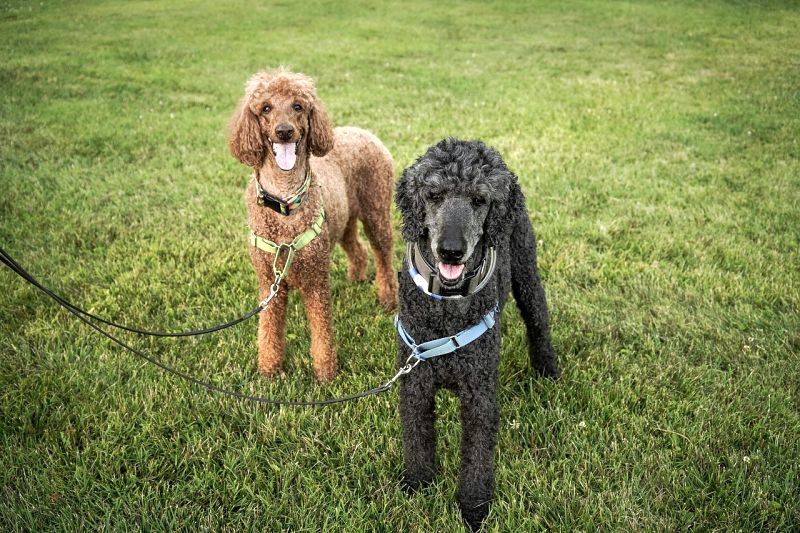
Few people know these fluffy Fidos got their start as hunting dogs, but poodles were initially expected to retrieve ducks in their native German homeland. More famously, poodles performed for crowds at the circus, where they were prized for their trainability and intelligence.
Today, all poodle types — toy, miniature, and standard — are still renowned for their brainy nature, as well as excelling in obedience, agility, and service work.
Poodles tend to love training and learning, as they want nothing more than to make their people happy. But while it is important to embrace positive training methods with all dogs, it is especially important to do so with poodles, given their sensitive spirits.
Like border collies (and many other dogs on this list) poodles also require daily brain and body workouts to prevent nuisance behaviors, like excessive barking and chewing.
3. German Shepherd Dog
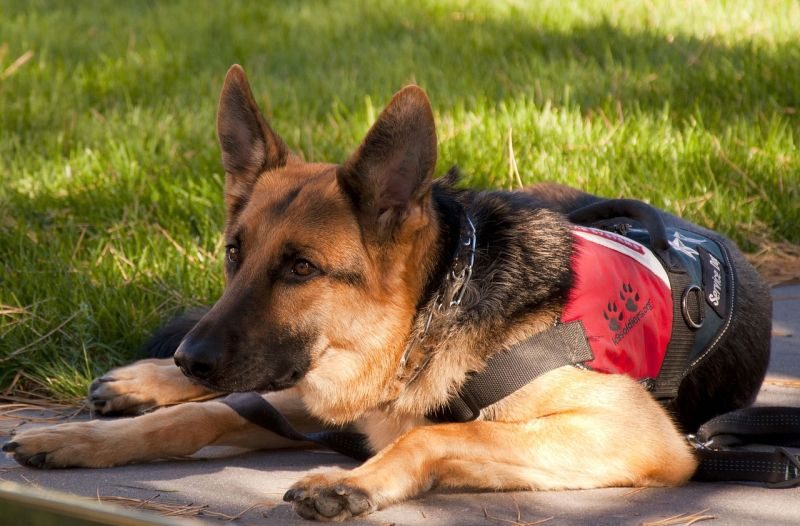
The German shepherd is treasured for his bravery, but he has a pretty sharp intellect too. One of the best-rounded breeds around, German shepherds ace nearly every test thrown their way, from sheep herding to explosive detection. Simply put: If you give a GSD a job, he’ll likely figure out how to complete it.
Given this, it should come as no surprise that these dogs need plenty of mental stimulation, such as brain games and “jobs” to avoid displaying destructive or otherwise-undesirable behaviors.
German shepherds (and many German shepherd mixes, quite frankly) are “Velcro dogs,” who love nothing more than being at their person’s side. While this attachment is endearing to many, it can become a problem if it develops into full-blown separation anxiety.
So, be sure to work on building up your shepherd’s confidence early in life and get him used to staying in his crate when you’re away, if you worry that he may become destructive when left alone.
4. Golden Retriever
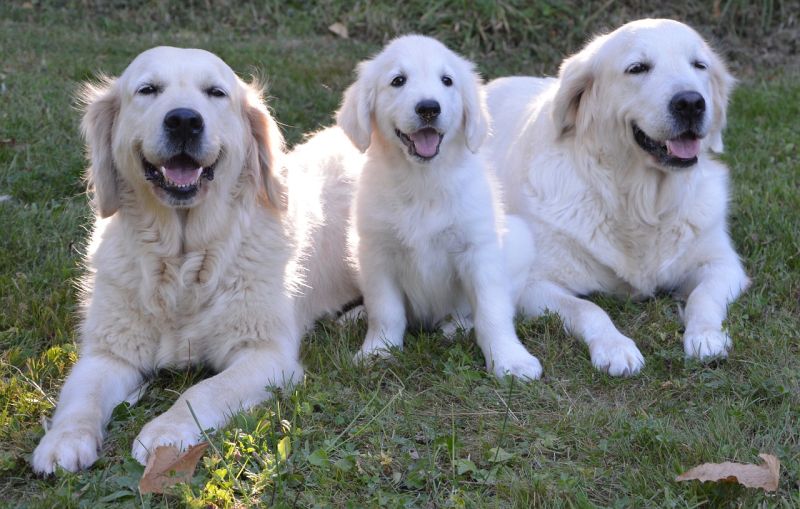
This golden child of the dog world is as bright as he is sweet. And honestly, that’s not surprising — these are pretty awesome all-around doggos.
But golden retrievers are so smart and in-tune with their people that members of the breed are some of the most trusted service dogs breeds in the world. In fact, they’re capable of doing everything from guiding the blind to helping seizure sufferers recognize when an episode is imminent.
The golden’s unique blend of intelligence, athleticism, and loyalty make him an all-around great pick for newbie dog owners, though you must provide plenty of daily exercise and brain games, like backyard obedience training and challenging games of fetch to keep him calm and content.
Goldens make excellent family dogs and are well-known for being gentle with children, other dogs, and small pets. They can, however, be mouthy like many other retrievers, so you’ll need to teach and reiterate the “Off!” and “Drop it!” cues sooner than later.
5. Doberman Pinscher
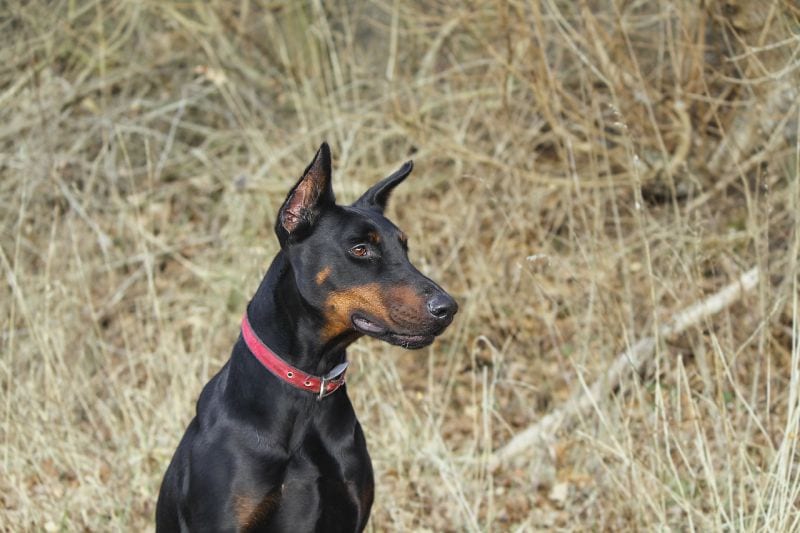
First developed as personal protection for a tax collector, this handsome German canine has gone on to become one of the world’s most revered military and police dogs.
His looks are certainly imposing, but his mind is too, as this smart dog breed is capable of solving puzzles on the fly. And because of this unique skill set, he’s a great contender for Schutzhund, a sport at which many large protection breeds like GSDs and Belgian Malinoises excel.
Unfortunately, while Dobermans are certainly sharp critters, they’re also extremely sensitive. This isn’t always a bad thing, but it can be challenging for owners who aren’t expecting such an imposing breed to be such a softie.
Dobies are also “Velcro dogs,” who tend to stick close to their favorite person’s side as often as possible. Some owners love this, but you’ll want to establish manners and healthy habits early to prevent nuisance behaviors from developing. Also, be sure to sign your Doberman up for puppy obedience classes to harness his intelligence and strength before he gets too large to handle.
6. Shetland Sheepdog
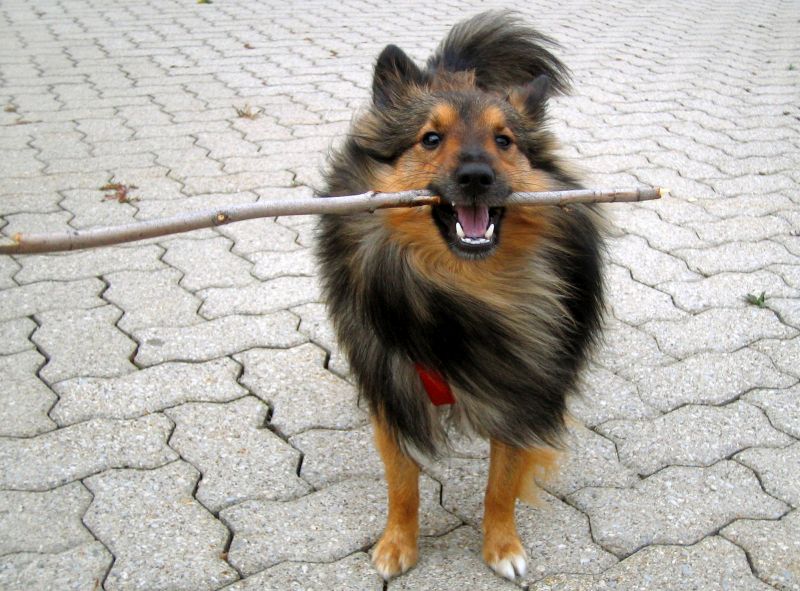
This petite herding breed will wow you with his smarts, as he thrives on learning new tricks and cues.
The Shetland sheepdog, or “sheltie” as he’s affectionately known, is a rockstar canine athlete, scoring high in agility and obedience. His herding instincts are strong, however, and he may insist on corralling kids or other pets — sometimes by incorporating some not-so-friendly ankle nips. This means he may be a better choice for homes that do not have young children.
Aside from being extremely intelligent, the sheltie is also sensitive, so you have to use positive training methods, dole out heaping helpings of praise, and avoid giving him harsh corrections. Focus on building up your sheltie’s confidence at a young age to help mold him into an obedient little friend who’s excited to start each new adventure.
7. Labrador Retriever
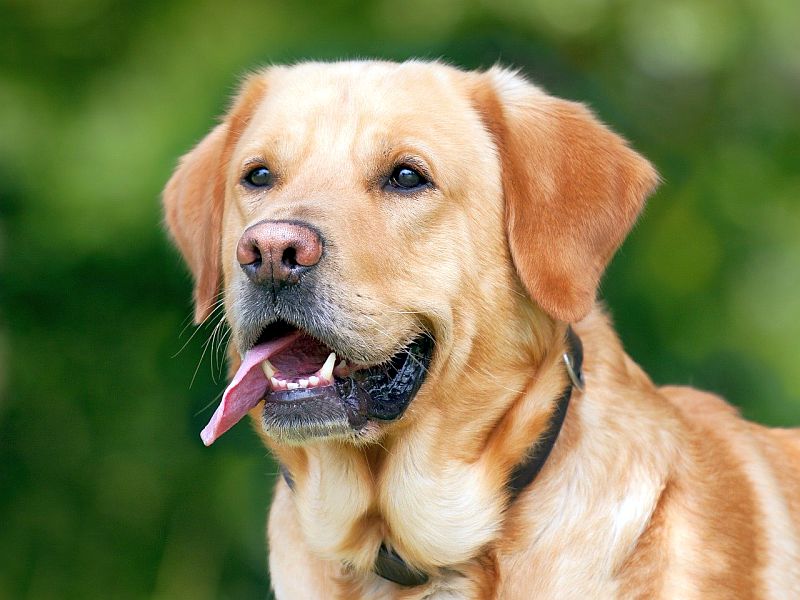
The Lab wins over most people with his friendly nature, but he also scores high on the intelligence charts.
Yes, he’s one of the most commonly seen breeds at the vet for foreign body ingestion and he’s often a mischievous little fella if not sufficiently stimulated, but he’s still a quick learner. Adding to his intelligence, the Lab is usually an eager eater, who’s easy to motivate with food and treats.
This means training a Lab is usually quite easy, hence their frequent appearances in retrieving competitions and other canine sports that test their intelligence.
Labs are, however, a very excitable breed, which can lead to jumping, lead-pulling, and mouthing early in life. So, make sure you start your Lab on the right paw by enrolling him in an obedience class while he’s young. He’ll typically excel with the basics, giving you the chance to move onto more challenging things, such as dock jumping or hunting work.
8. Papillon
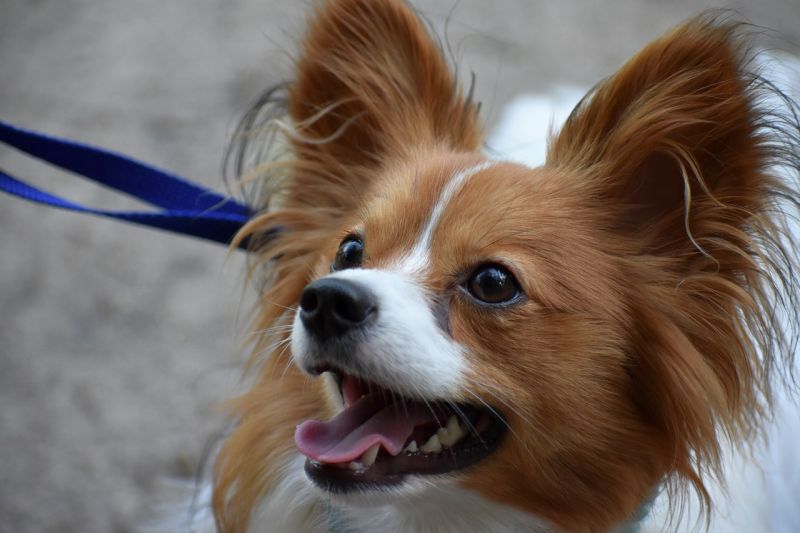
Don’t let his small size fool you — while the papillon is certainly pint-sized, that little skull hosts a big brain. And that’s worth pointing out, as you’ll likely notice that most of the other breeds at the top of the canine intelligence chart are medium or large breeds.
But while this little guy may have gotten his start as a little lap warmer, you can’t let that fool you: He’s one smart and capable cookie. And as one of the easiest toy breeds to train, your papillon will learn commands and basic obedience very quickly. This even extends into the housetraining arena — something few other small breeds pick up quickly.
With his intelligence comes a need for daily stimulation and exercise to keep him looking and feeling his best. Paps (who many also consider to be one of the most beautiful dog breeds) love to retrieve during spurts of backyard fetch, but they’re also clever little critters with a knack for puzzle games and other types of interactive toys.
9. Rottweiler
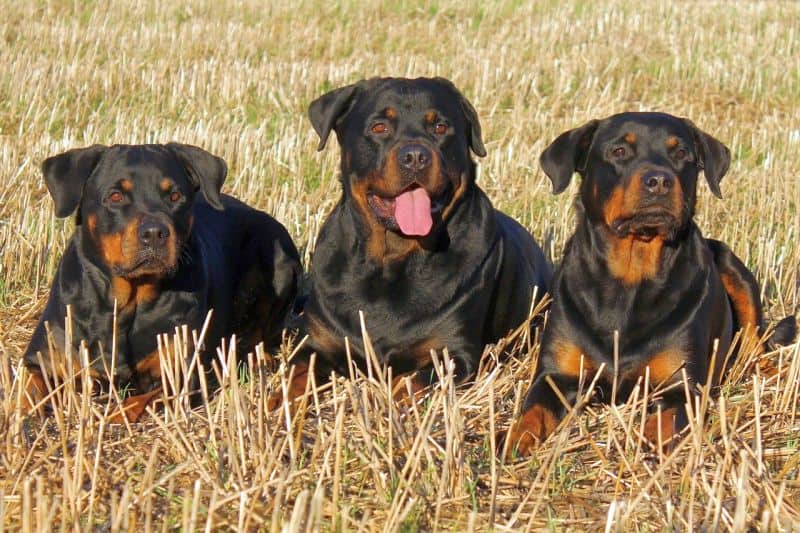
Rotties are legendary protection dogs, but they’re also forces to be reckoned with in the obedience ring.
With nearly unmatched loyalty and an indescribable eagerness to please, the Rottweiler forms a special bond with his preferred person and excels in training tasks, provided that you use positive, reward-based methods — these are supremely sensitive doggos, who do not respond well to harsh training methods.
Unfortunately, he can be a bit stubborn at times and choose to do things his own way. This means that owners must strike a delicate balance between providing calm, assertive leadership, while still remaining fair and gentle with their Rottie. Accordingly, Rotties are not a good choice for first-time owners — if fact, they’re probably one of the worst dogs for novices.
If you’ll allow me a brief personal interjection, my Rottie is undoubtedly the most intelligent dog I’ve ever owned, as well as one of the sharpest I’ve ever met.
But her intelligence is a bit quirky too.
For example, she reads me in nearly supernatural fashion. She frequently seems to know what I’m about to do before I do it (undoubtedly by reading the subtlest body language cues I provide), and she picks up our routines ridiculously quickly.
She’s learned typical commands like sit, lay down, heel, and speak with ease, and she also picks up the goofy fun tricks I teach her (like barking to “rescue” me from the closet or knowing that she has to pass through the “hug trap” before dinner) without trouble.
But this same borderline-brilliant dog sometimes struggles with simple stuff like bringing me a toy I’m pointing at. She also confuses some of the various location names she knows (like the couch, the bed, and the front door) when she’s really excited.
10. Australian Cattle Dog
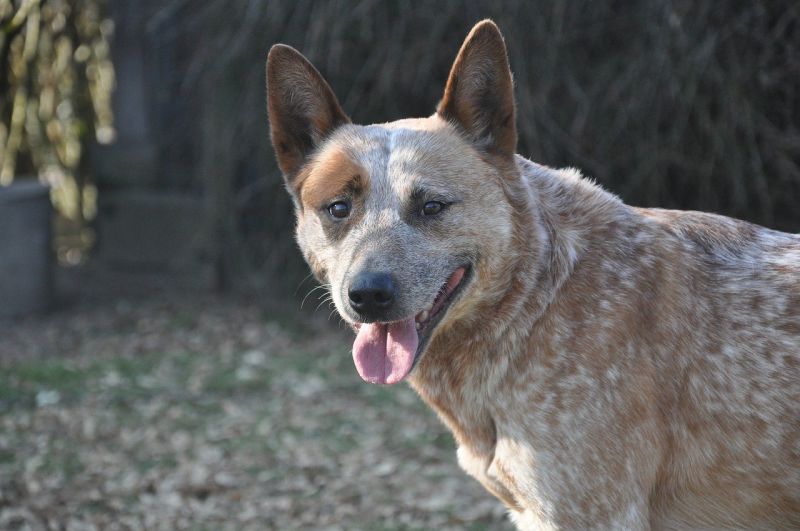
Also known as a blue heeler, the Aussie cattle dog is great at many tasks, but he’s incredibly skilled at working cattle.
A true workaholic of a woofer, this breed is certainly not a low-maintenance doggo. In fact, he seems to lack an off switch entirely — blue heelers are, as the saying goes, “born under a green light.” This makes them a poor choice for those who like lazy weekends around the house or newbie dog owners who may quickly find themselves in over their heads.
Rest assured, your Aussie cattle dog is going to find some way to entertain himself and burn off surplus energy; it’s up to you to harness this drive in a constructive (or at least, non-destructive) manner.
But the cattle dog isn’t just a high-octane dog, he also learns remarkably fast. And this means he gets bored quickly.
Repetitive training and exercises aren’t his favorites, and if he’s not feeling challenged or satisfied with his day-to-day activities, he’ll start finding his own fun — like exploring what the inside of your couch looks like.
11. Pembroke Welsh Corgi
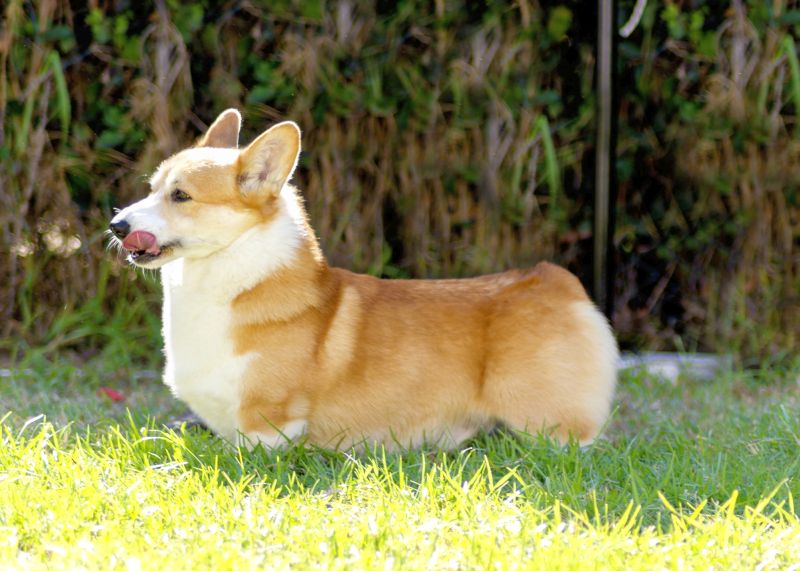
Corgis (and corgi mixes) have become a bit of a meme phenomenon, and most people love how otherworldly adorable these dogs are. But corgis are a lot more than just cute canines — they’re actually intelligent dogs who fall just outside Coren’s top-10.
The corgi is a fast learner, who’s keen on pleasing his people, making him a natural on the obedience and agility circuits. He can have bouts of independence, however, so have a little patience with him and keep training fresh and fun to hold his attention.
Corgis were bred to herd livestock, so they’re definitely not couch potatoes. They need daily exercise and plenty of stimulation (as well as a premium corgi dog food), but you can provide this in a number of different ways. Agility trials, obedience work, and herding games are all great ways to keep your corgi’s brain buzzing, but interactive toys can also be helpful in this respect.
12. Miniature Pinscher
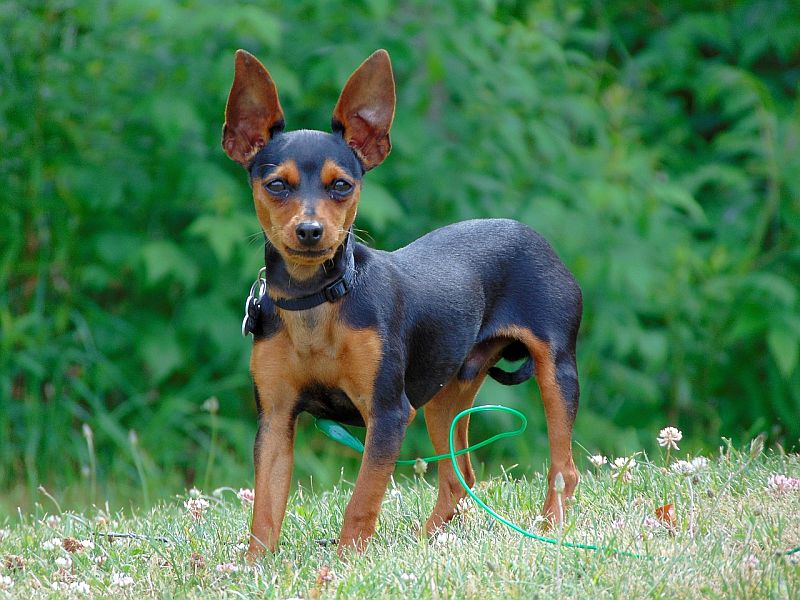
Perhaps a little less popular than the other breeds discussed thus far, the min pin is a curious canine who deserves more attention than he gets. A smart cookie with a propensity for learning, the min pin easily masters commands and tricks without much fuss.
He does require a bit of tasty motivation here and there, however, as this smarty pants also comes with a rebellious streak a mile wide.
And while the min pin is certainly small, he has higher exercise requirements than some other pint-sized pooches. Daily exercise is crucial in keeping him trim and healthy, as min pins have a bad habit of becoming min pigs if they’re given too many treats.
He can also get into a fair amount of trouble if he finds himself bored and alone for long, so keep your miniature pinscher engaged to avoid problems. Lastly, while he’s great with older kids, there are better small dog breeds for families with young kids available.
13. English Springer Spaniel
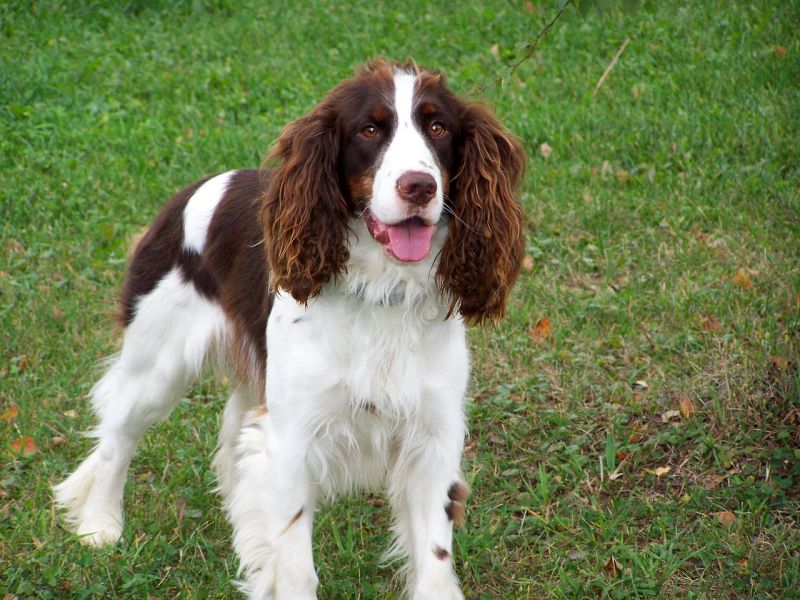
The English springer spaniel is an athlete at heart, but he’s also a contender for top honors in training with his knack for learning. In fact, he’s not only good at learning, but he — like many other sporting breeds — loves the act of learning and picking up new skills.
Bred to find, flush, and retrieve birds during hunting, he’s a natural in the brush, whether you’re hiking or exploring the park (this is probably also part of the reason he’s frequently used to make the designer mix known as the Springador). His long and luscious coat can be kept clipped shorter for easier grooming too.
This Englishman can be quite sensitive, so try not to raise your voice around him if you can, and always keep training positive and reward-based. He may also be prone to separation anxiety, making confidence-building in puppyhood essential along with crate training.
14. Belgian Tervuren
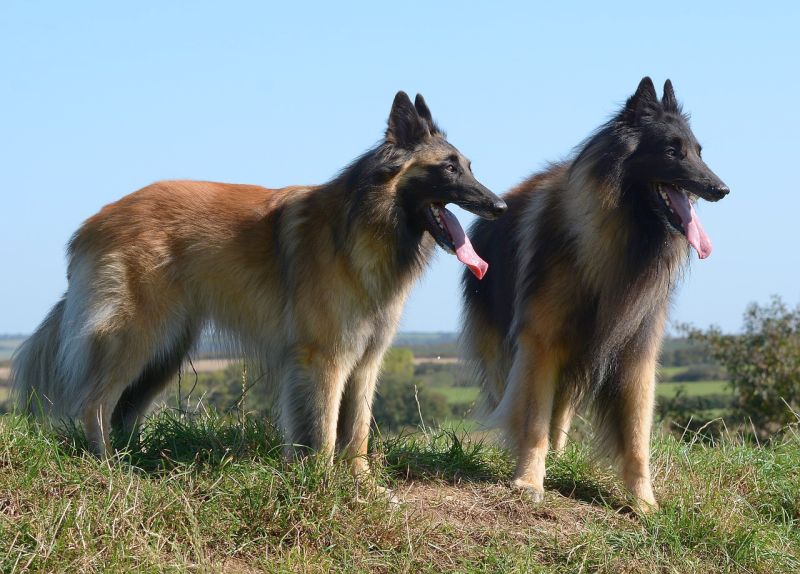
Also known as the Terv to breed fanciers, the Belgian Tervuren is a crafty canine who thrives with a “job.”
This job can include a wide variety of different tasks, from herding livestock to guarding property to working side-by-side with police officers. This means that it’s easy to keep him stimulated, which makes him great for a variety of different situations and circumstances.
The Belgian Tervuren learns at break-neck speeds, but this is both a blessing and a curse. Sure, it’s easy to teach him new skills, but he’ll quickly tune out and start to ignore any training tasks that he deems too repetitive. So, you’ve got to keep things fresh and interesting.
These sweet-looking sable dogs also have a bit of a ‘tude at times, so they require owners who can instill positive, calm, and assertive leadership. He’s not a breed for the inexperienced, and even owners with a ton of training experience will occasionally find the breed challenging.
15. Schipperke (Tied for #15)
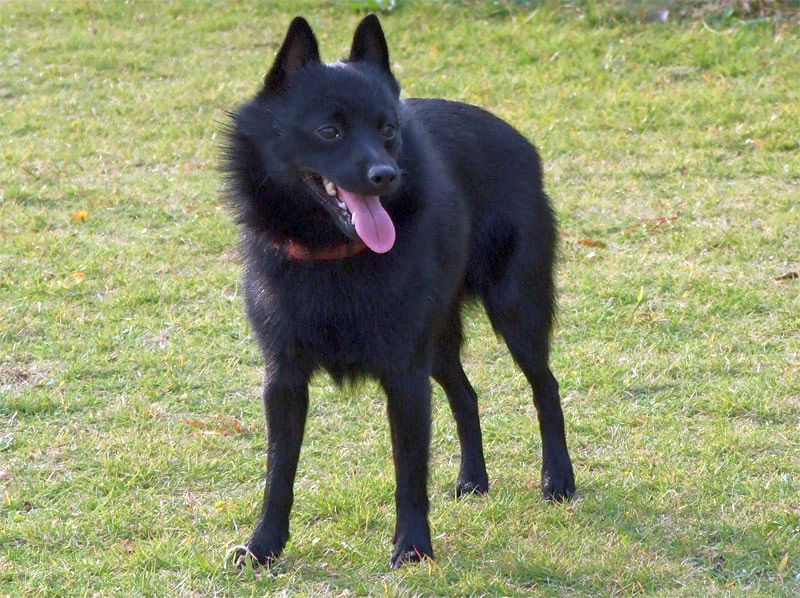
Originally used as ratter and watchdog on ships and barges, the Schipperke is highly alert and focused, which helps him excel at almost any task.
Obedience and herding are just some of his strong points, but he’s also an adventurous canine, who’s down to explore anywhere with you, making him an excellent travel and hiking dog buddy. He can be prone to chasing other animals, however, so always keep him on a leash in open areas to be safe.
Apartment dwellers looking for a big dog feel in a small dog frame will adore the Schipperke, though early training is essential in preventing him from becoming a nuisance barker. He needs daily walks and play too to ward off any other naughty behaviors, as he will make his own fun (sometimes destructively) if left alone unstimulated.
15. Belgian Sheepdog (Tied for #15)
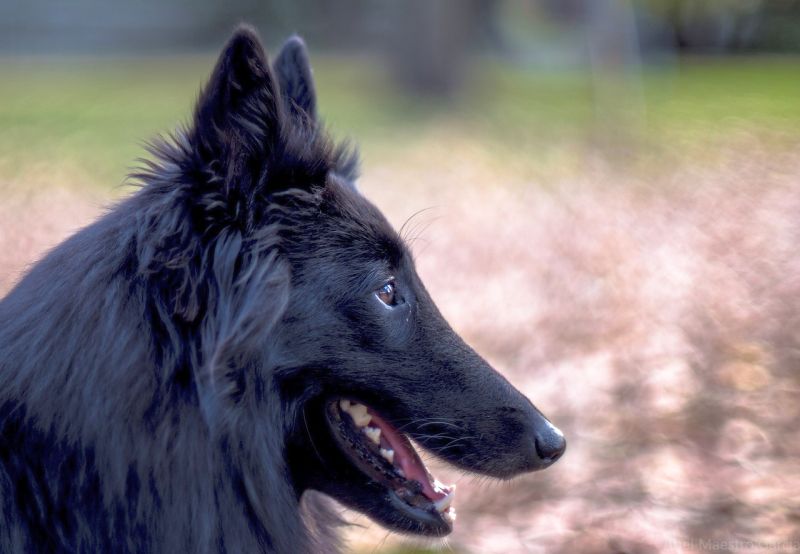
This Belgian brainiac makes training a breeze (mostly).
He’s highly intelligent and motivated while learning, though he can sometimes be a little too serious about work and forget to have fun. Fortunately, it’s easy to keep him active and stimulated, as you can satisfy this workaholic nature by giving him a job, such as competing in agility or joining you on your morning run.
That said, he’s far less demanding (and better for less-experienced owners) than his short-coated cousin, the Malinois.
As with many herding breeds, the Belgian sheepdog is a big softie at heart. This means you should never be too hard with him or issue sharp corrections during training. He’s happiest when he’s by your side and shouldn’t be left alone for long periods to entertain himself.
16. Collie (Tied for #16)
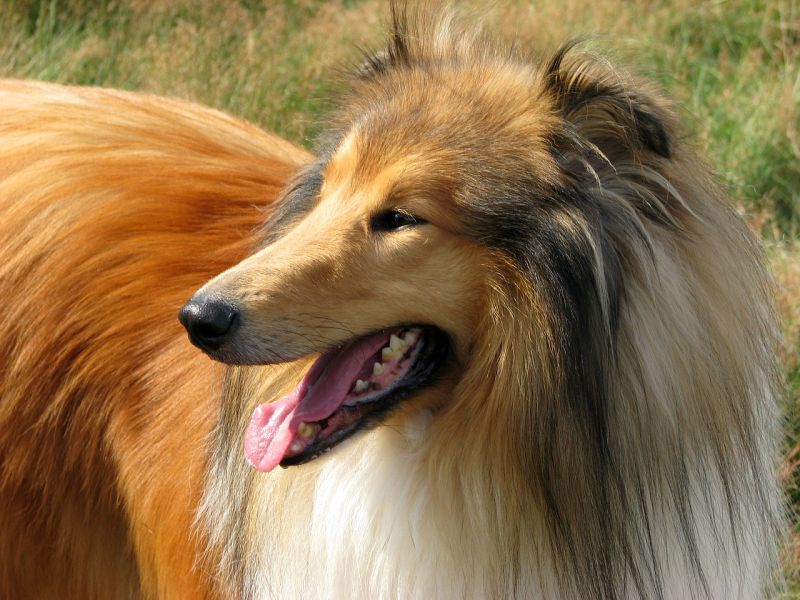
Lassie’s loyalty and intelligence weren’t just part of being a famous TV dog — they’re the real deal for collies!
Like most herding breeds, the collie is a doggo Einstein, who learns new commands with relative ease. He loves having a job to do, so don’t be shy about giving him new tasks, whether it’s chasing geese from your pond or helping you around the farm.
But he is another pup with fragile feelings, requiring a gentle hand and tone during training. Keep sessions fun and avoid harsh corrections, and you’ll be rewarded with a lifelong companion who’s eager to please.
16. Keeshond (Tied for #16)
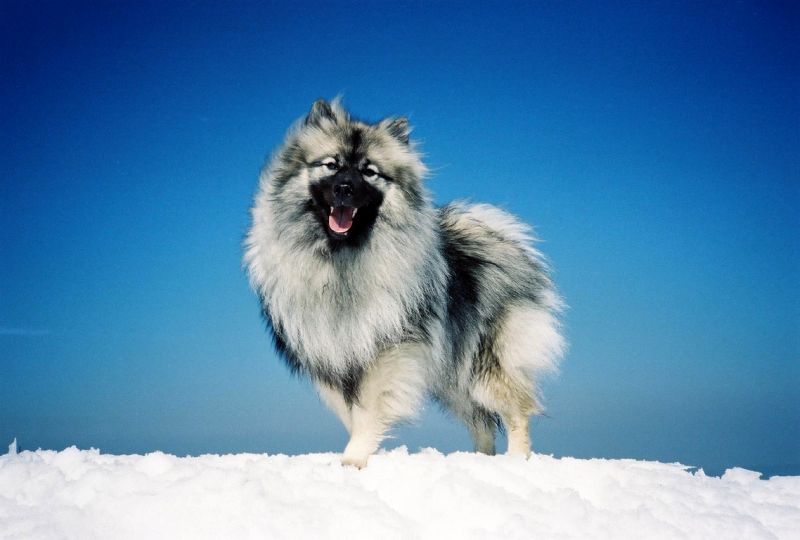
Originally used as a watchdog on barges, the keeshond is a spitz whose wit shines best in obedience.
This fantastically fluffy dog breed loves to learn new things, and you’ll find that your keeshond loves to entertain those he loves to earn a belly scratch or a treat. Because of this gentle nature and intelligence, he’s highly valued as a therapy dog.
While this tenacity for learning is excellent, your keeshond will not be satisfied with practicing the same old routine time and time again. Variety is the spice of his life, and if you aren’t flavoring up his day-to-day routine enough, he’ll start acting out as he sees fit.
So, for maximum household harmony, be sure to switch up his activities regularly and always maintain a positive attitude to unlock his full potential.
17. German Shorthaired Pointer
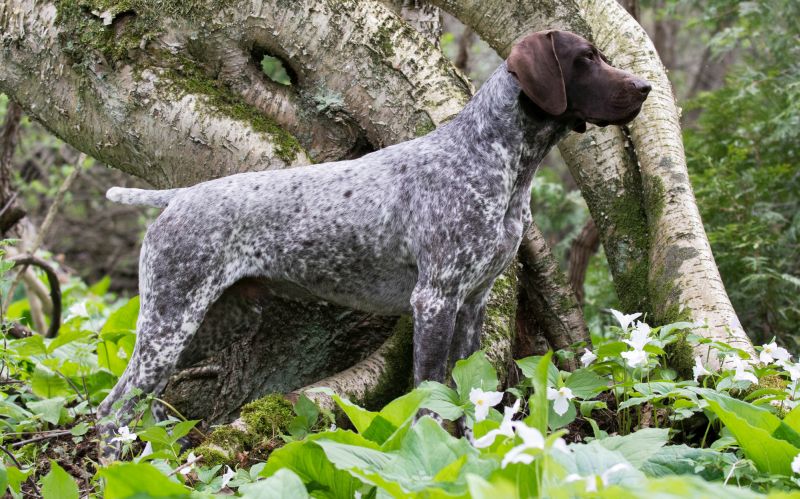
This German gent is as striking in intelligence as he is in appearance. And his intelligence was actually key to his development, as this all-around hunting dog is expected to perform a wider variety of tasks than many of his close relatives.
He’s a swift learner who loves praise, but he isn’t afraid to push boundaries as he sees fit. Early obedience training is essential in locking him into good manners at an early age, otherwise, you’ll be left with a large, rambunctious dog who’s difficult to rein in.
But while the German shorthaired pointer looks a lot like a Lab or Lab mix, he’s not quite as well-suited for novice owners. He’s a spring-loaded pup that runs full-speed ahead with everything he does, which can be overwhelming to those learning the ropes of doggo life.
But, if you’re an experienced dog parent who can lead confidently and consistently, the GSP can be your dream sporting dog with some hard work, ready to take on life’s next adventure by your side.
18. Flat-Coated Retriever (Tied for #18)
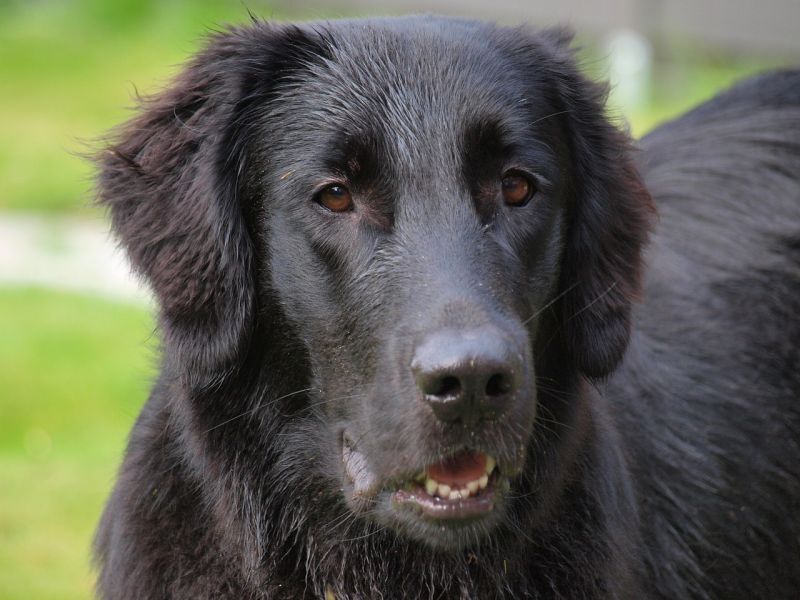
This soft-haired sweetheart is one of the easiest breeds to train. Always ready to please and be with his humans, the flat-coat is an excellent choice for those looking for a dog with brains and heart. He can be remarkably sensitive, though, needing training methods that are consistently positive.
He’s easy-going and always ready with a kiss, making him the perfect family dog. Watch out for excitability and jumping because he can and will hop in your face if he’s not taught manners early on.
18. English Cocker Spaniel (Tied for #18)
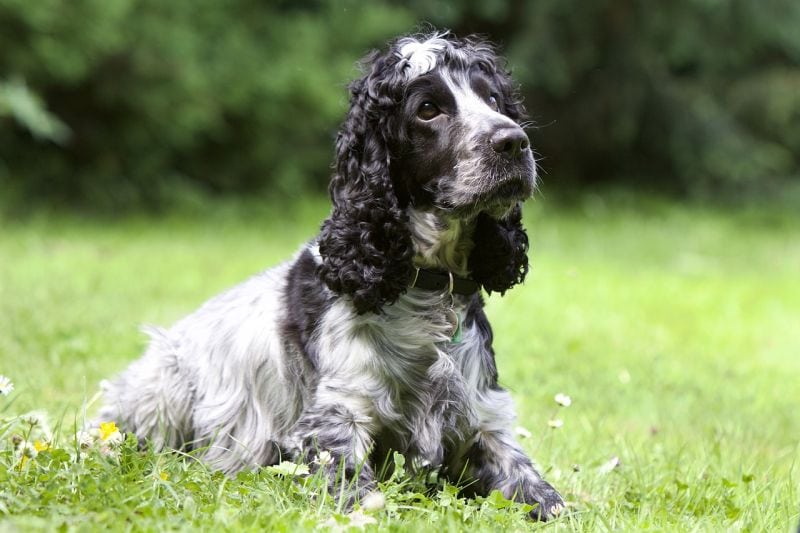
The English cocker spaniel is an all-star learner, as he’s highly motivated and devoted to his handler during training sessions.
One of the easiest breeds to train, this spotted dog breed pairs nicely with newbie dog owners, though his coat upkeep can be a bit much for owners seeking a lower maintenance pooch. Keeping his coat clipped short cuts down on maintenance, however, so be sure to discuss your options with your groomer.
While affectionate with his favorite people, this Englishman can be snippy with strangers, so work on socialization with other people and dogs from an early age to establish good manners. This training should be ongoing and focused on positive interactions in controlled environments to build up your pup’s confidence.
18. Standard Schnauzer (Tied for #18)
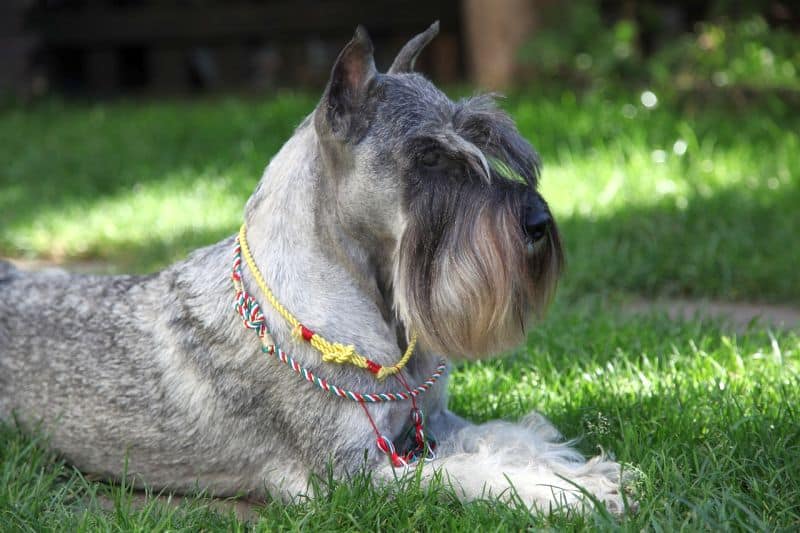
This distinguished doggo is certainly smart, and his iconic beard even gives him a bit of a wizard vibe. And don’t worry — despite that long and luscious beard, he’s actually a light-shedding dog breed.
A natural when it comes to learning commands, the schnauzer learns very quickly (including commands and routines), but he’s not a fan of repetitive training modules or anything he deems boring. He’s a doggo that requires variety and novelty to remain intellectually stimulated.
In fact, this can make him seem a bit stubborn or headstrong, but it just illustrates that he needs a person who can mix things up and keep lessons fresh. This can make him challenging for novice owners, so he’s generally best left to those who’ve had a dog or two in the past.
Despite his dignified looks, the schnauzer is surprisingly sporty, which can play to your advantage while working on switching up your training routine. You can work on obedience one day and agility the next, and once he thinks he’s figured out what comes next, you can toss in lure coursing or nose work to keep him guessing and engaged.
19. Brittany
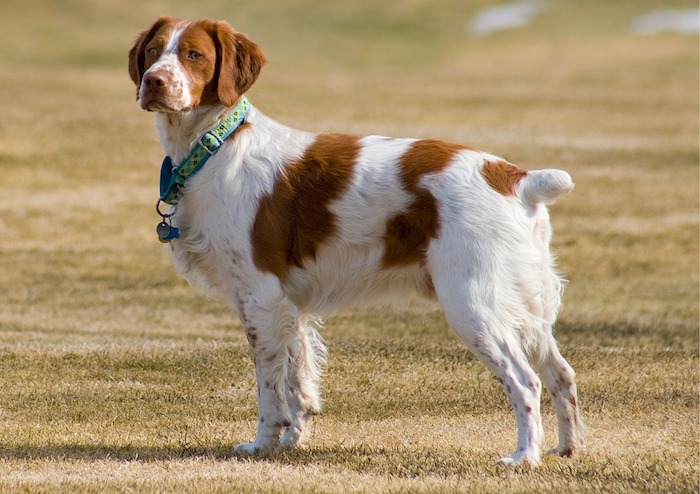
This cheery spaniel’s a regular in obedience and agility rings alike thanks to his intellect and history as a birding breed. He learns new commands and tricks with ease and doesn’t mind showing them off when asked. This leggy canine is also one of the sportiest spaniels, tackling nearly every activity with gusto, from dock diving to fieldwork to flyball.
Despite being rough and tumble during his workouts, the Brittany is a delicate dog at his core, requiring gentle handling and heaps of praise to prevent hurt feelings. This soft side can make him susceptible to separation anxiety, so opting for doggy daycare or a dog walker to pop in while you’re working away from home for long hours would be ideal.
20. (American) Cocker Spaniel
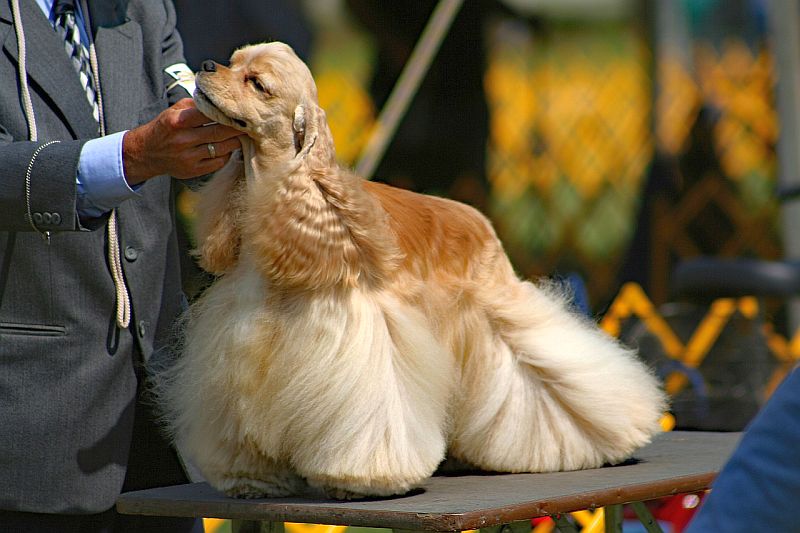
The American variety cocker came slightly below his English cousin in ranking, but that doesn’t mean his smarts are anything to sniffle at.
He’s capable of picking up new tricks with ease and forms tight bonds with his favorite people that make training far easier, as he’s seeking your praise. Lay on that praise thick and reward him with food for best results, saving those high-value rewards for extra special tasks to keep him tuned in.
The cocker is highly adaptable, living in many settings with ease, though early socialization should be prioritized to avoid snippy behavior. He’s also one of the less demanding spaniels in the exercise department, finding a daily walk and backyard play sufficient.
21. Weimaraner
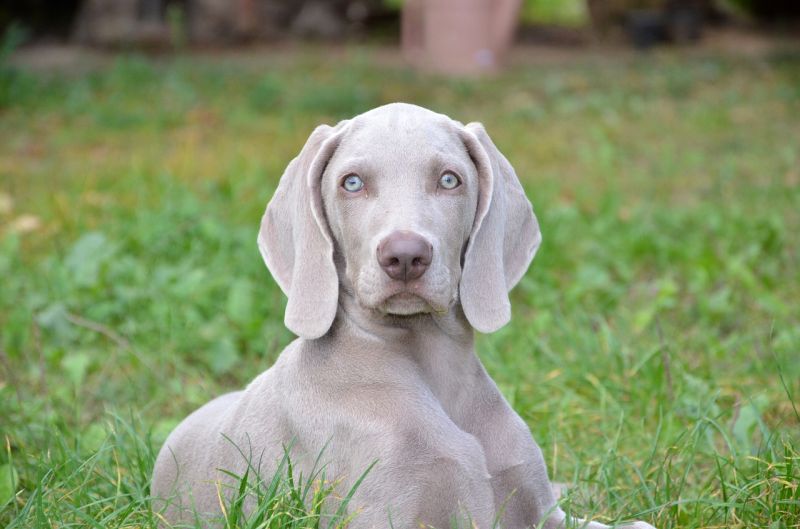
The Weimaraner isn’t just a beautiful breed (who occasionally has blue eyes), but he is also a bright pooch, who is smart in many ways. Often known as the “grey ghost,” the Weimaraner picks up new skills rapidly but also trains his trainer to train him how he’d like to be trained.
Wait, what?
That’s right: This witty woofer is so intelligent that he will occasionally manipulate you while you’re trying to manipulate him.
This means you’ll need to employ constant training adjustments and enticements to keep him focused on the task at hand. Keep those high-value rewards handy. You’re going to need them!
The Weimaraner is an active person’s dream dog with stamina built for jogging or biking beside you. He’d prefer daily jaunts, so get your running shoes ready and pack lots of water. Work on those leash manners ahead of time, too.
22. Belgian Malinois (Tied for #22)
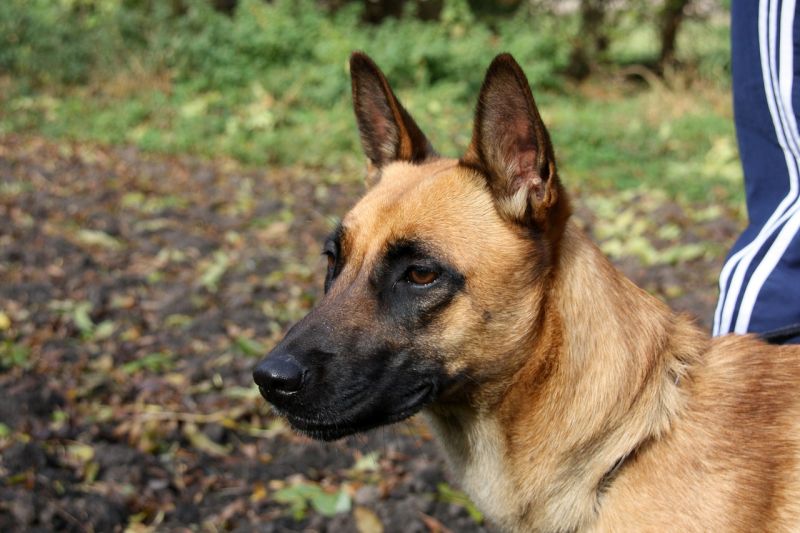
You’ve likely seen this badass barker showing off around the internet, usually doing some sort of crazy physical feat, but he’s equally impressive when it comes to intelligence.
These famous fawn-colored four-footers form tight bonds with their handlers and love to learn new tricks and skills, whether it’s climbing a ladder or dock diving. If there’s an obstacle, they’ll figure it out.
But let’s be clear about something: The Malinois is not a dog for novice owners. Even the most experienced dog owners will often find him to be too much to handle. Their combination of intelligence and work drive are difficult to convey, and they’re working dogs through and through.
A bored Malinois is an unhappy Malinois, and an unhappy Malinois is not something you want. He not only thrives with daily physical and mental challenges, but he requires them.
22. Bernese Mountain Dog (Tied for #22)
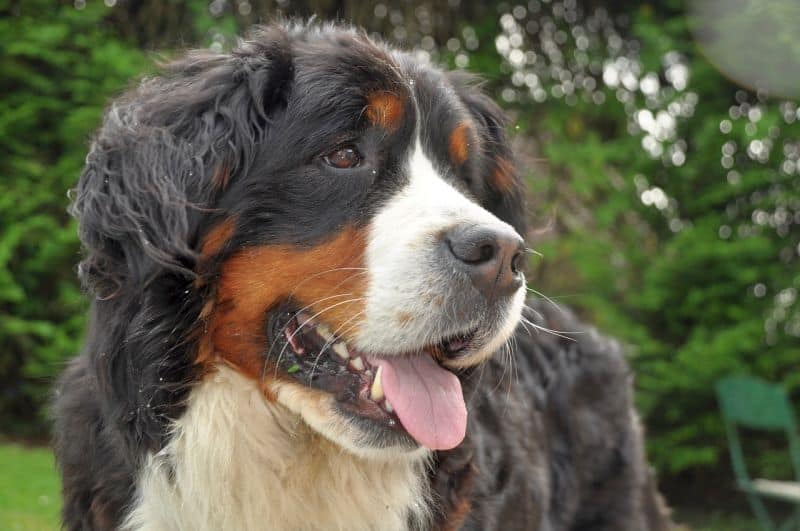
The Bernese mountain dog is as smart as he is affectionate, and this handsome tricolor dog will be glad to perform just about any task that makes you happy.
He feeds off praise and positive reinforcement, so always reward him for a job well done. In addition to daily mental stimulation, he needs regular exercise to prevent naughty behaviors, as he can inflict a lot of damage around the house if left unsupervised and bored.
Due to his size, the Bernese mountain dog requires early obedience training to set up his skillset, establishing leash manners and basic commands while he’s still small enough to handle. This should be done with consistency, care, and compassion, as he’s a big baby under all that fluff.
23. Pomeranian

Smart and sassy, the Pom is a toy breed, whose intelligence allows him to shine in sports typically dominated by bigger breeds, like agility and rally. This intelligence — combined with his obvious cuteness — makes this dog breed expensive at times, as some individuals sport price tags of $4,000 or more.
He’s confident in himself and his abilities during training, but he can be a pain to housetrain (like many other small breeds), so patience is definitely required. Also like many other small breeds, your Pom needs to have clear boundaries and early, ongoing training and socialization to avoid behavioral issues.
Build his confidence from the day he comes home, teaching him regular commands and manners while weeding out nuisance behaviors, like excessive barking or snippiness.
24. Irish Water Spaniel
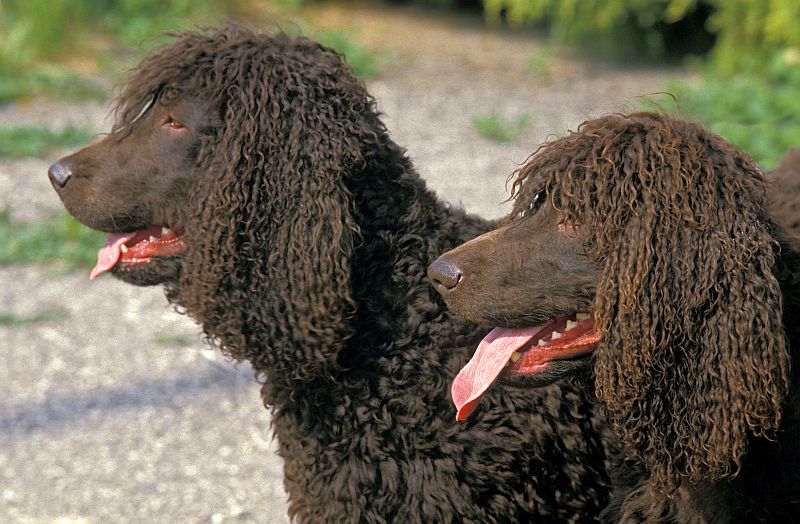
The Irish water spaniel is a curly-coated dog breed who learns commands quickly and seeks to excel at every task he’s given.
He loves nothing more than making his handler happy, but he’s one of the more sensitive souls in the dog world, requiring positive training that focuses on what he’s doing right rather than what he’s doing wrong.
This canine athlete could handle the doggy Olympics on his own if he wanted to, as he excels at many sports, including dock diving, agility, and flyball. And it’s a good thing too, as he needs frequent exercise that flexes both his body and brain to avoid destructive behaviors.
25. Vizsla

This Hungarian hunk is a whiz when it comes to learning. Originally bred as a hunting dog, vizslas are still regulars in the field, even though most of these four-footers likely spend lives as pets and family members.
The vizsla thinks quickly and acts just as fast. This makes it easy for him to overcome any challenge you put in front of him, whether it’s finding a pheasant in a meadow or sniffing out hidden treats in the yard.
While the vizsla is an amazing learner and sporting companion, his intelligence also means that he can be a button-pusher, who will test your patience regularly. He’ll also decide to redecorate your house if left alone, often making legendary messes that may leave you (and your wallet) in tears.
For that reason (and his overall high energy level), the vizsla needs tons daily physical and mental exercise beyond a backyard game of fetch. Hiring a dog walker for your long days at the office is a good idea, though a stay at doggy daycare might be even better for pups who enjoy the company of other floofs.
The Flip Side: Some of the, uh, Simple-Minded Sniffers
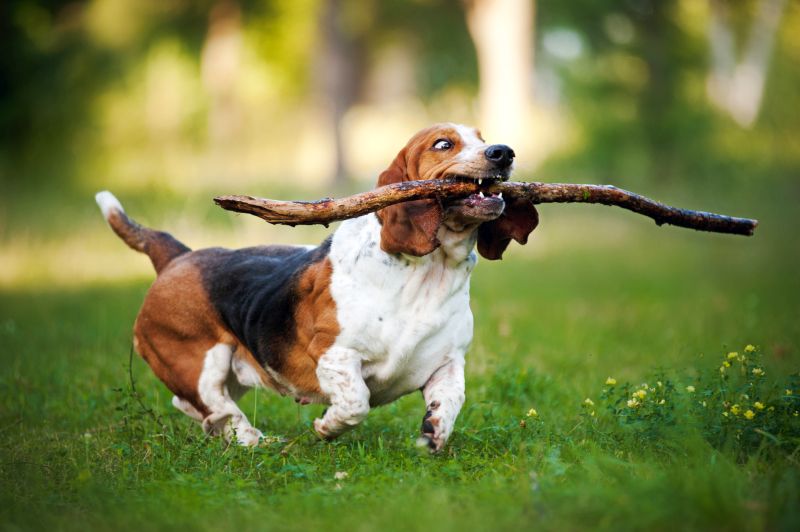
While many breeds shine bright on the intelligence charts, some aren’t exactly screwed in all the way. This doesn’t necessarily mean they’re dumb, but they certainly struggle a bit more with training basics, from following simple commands to housetraining.
This group is far more challenging to handle than most, but with patience and a bit of humor, experienced owners can overcome training snafus along the way.
1. Shih Tzu
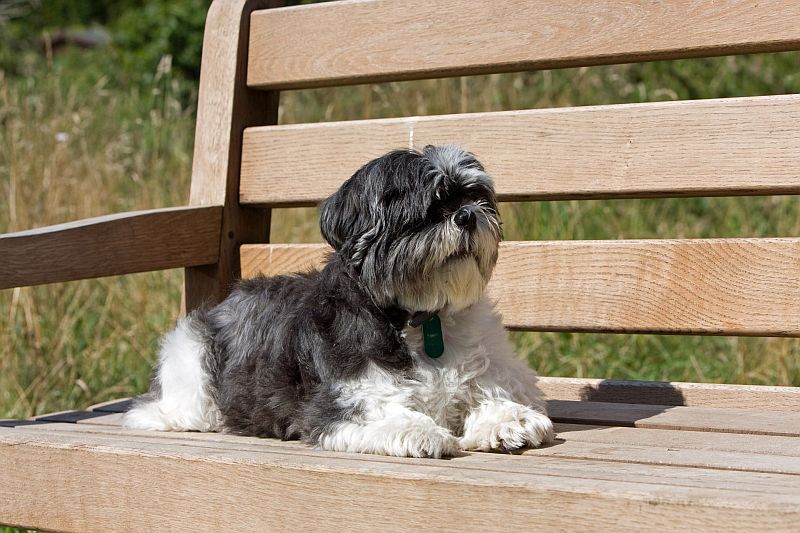
As adorable as he is with those big doe eyes, this little fuzzball isn’t bringing home ribbons in obedience anytime soon.
Though Coren ranks them at #70 on his list, shih tzus (and shih tzu mixes) aren’t always bad learners — it’s just that they’d prefer to do things at their own pace and they lack the motivation to please their people some other dogs have. This stubbornness can frequently lead to housetraining problems and inconsistent responses to commands.
On the plus side, he doesn’t need much physical exercise, and they aren’t exactly expensive to feed. Just be sure to enjoy some indoor play time between training sessions to burn off the countless treats you’ll go through trying to master simple things like “Sit.”
2. Basset Hound
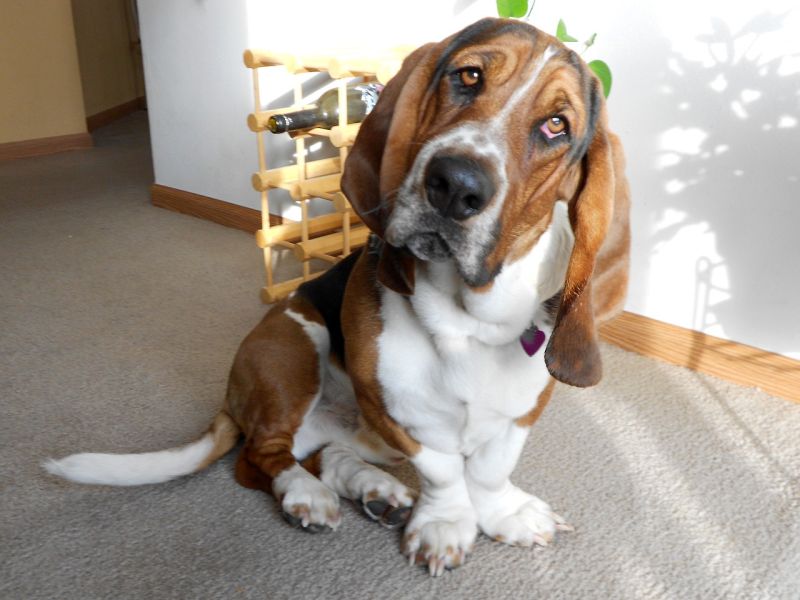
As a rule, the hound group isn’t known for having many canine savants in their ranks, and the basset hound (who comes in at #71 on Coren’s list) is no different.
As one of the most independent breeds, he’s just not super motivated to learn tricks or commands. He’d rather sniff out an opossum or raid the floor for crumbs than do your bidding. Food can be a much-needed motivator for him during training, though he’ll still do things his way, so you’ll have to remain patient.
However, with enough time, repetition, and consistency, he’ll get there.
Eventually.
His difficult nature makes him a bad choice for most newbie dog owners, and those used to more obedient breeds may struggle to adapt to his learning style. That said, his low-energy lifestyle means that he can excel in some situations in which other dogs fail, such as when forced to live in a small apartment.
3. Afghan Hound
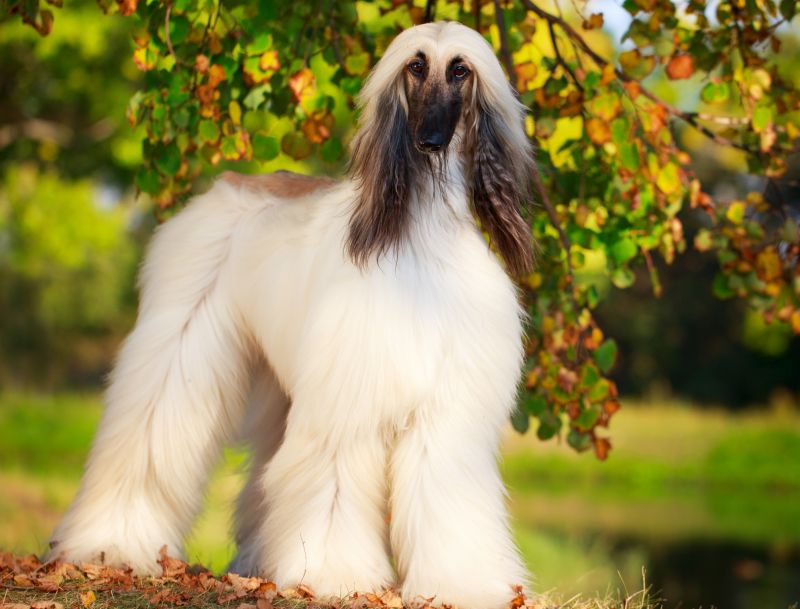
The worst ranking breed on Coren’s scale is the Afghan (#79), a majestic sighthound known for his handsome coat and free spirit. He’s one of the most independent breeds out there, which makes teaching the most basic of commands a struggle.
With patience and positive reinforcement, however, you can usually accomplish these goals — it’ll just take a lot of work.
Because of his lack of enthusiasm surrounding training and his powerful prey drive, the Afghan isn’t recommended for new dog owners. He should never be trusted off-leash in open areas, either — you may never see him again. Instead, you’ll need to help him safely indulge in his chasing instincts through sports, like lure coursing.
On the plus side, Afghan hounds are usually pretty quiet dogs, who don’t do a lot of nuisance barking.
4. Basenji
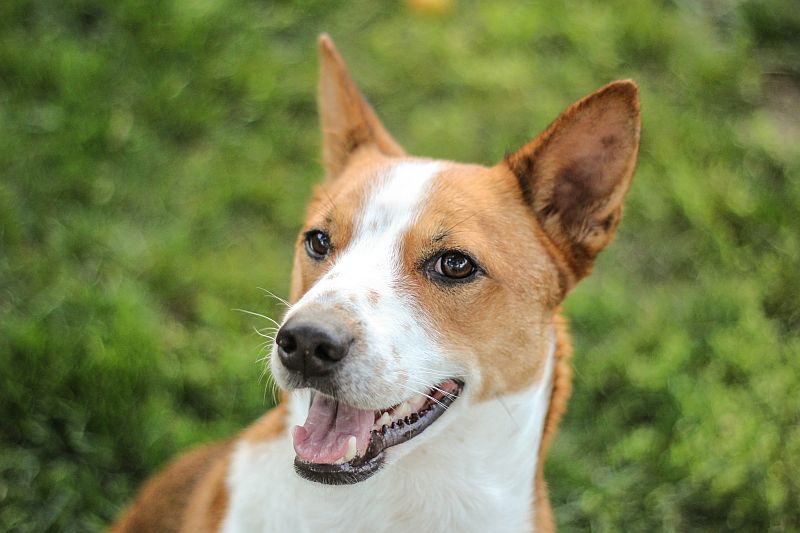
K9 of Mine contributor Kelsey Snyder has some experience with and strong feelings about this African dog breed, so I’m going to step aside for a moment and let her fill you in on these unique puppers.
As someone who once cried because my basenji piddled figure-eights across a freshly washed floor, I feel the basenji’s second-worst ranking (#78) on Coren’s scale in my soul.
However, the basenji is not dumb at all. In fact, he’s crazy intelligent, but he’s so independent and mischievous that you’ll find yourself second-guessing every dog training decision you’ve ever made. He also lacks the people-pleasing gene that so many other dogs have, which means that he’s just not particularly interested in doing things for your enjoyment — he does the things that he wants to do.
The basenji does best in training when rewards are involved, preferably his favorite snacks that smell great. He has a very short attention span, so you have to keep training sessions short (I’m talking five minutes tops) and interesting before you need to regroup and try again later.
5. Pekingese
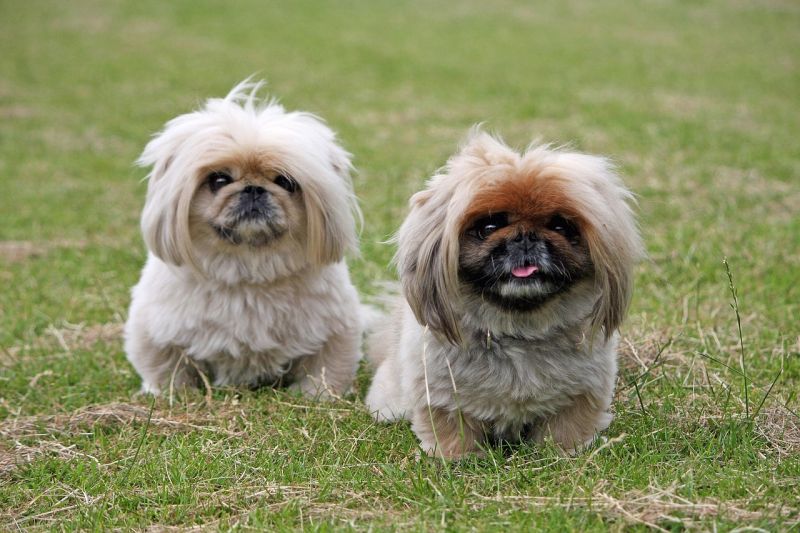
This shaggy short-legged fellow won hearts around the world when Wasabi won Best In Show at 2021’s Westminster, but he’s more focused on doing his own thing than listening to us pesky humans. This can mean lots of training hiccups and headaches for this Chinese dog breed, so beginner dog owners should steer clear.
We say this with love, but Pekes aren’t likely to excel at much beyond hair growth, cuddling, eating, and making you laugh. They are lovable little clowns rank #78 on Coren’s scale, and they’re intent on snuffling their way into your lap, rather than solving puzzles or following your every command.
Where Do Some Other Popular Dogs Rank on the Intelligence Scale?
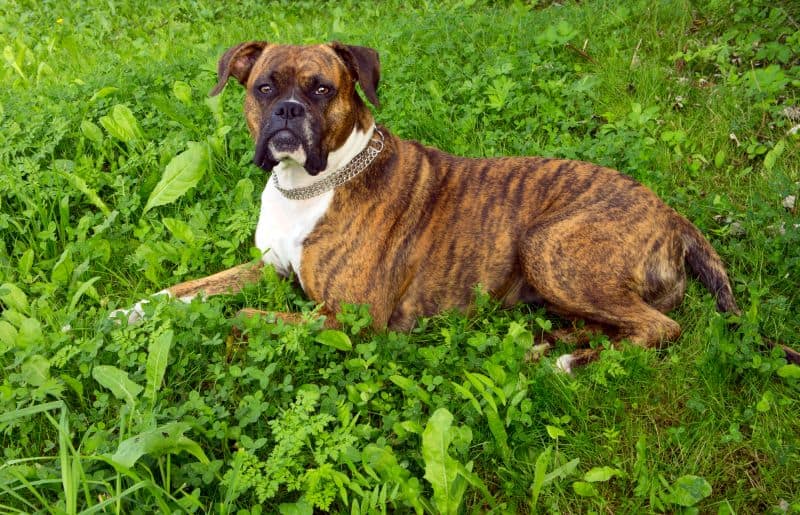
Coren’s scale does a great job of breaking breed rankings down into groups, helping you gauge the study better overall and see where your favorite dogs rank. We can’t list all of the dogs Coren ranked, but we’ve included some of the most popular and notable examples below.
A few breeds with above average intelligence include:
- Yorkshire terrier (tied for #27)
- Samoyed (tied for #33)
- Newfoundland (tied for #34)
- Irish setter (tied for #35)
- Dalmatian (#39)
These above-average dogs still hold their own when it comes to learning. The Newfoundland, for example, is a renowned water rescue dog who’s one of the easiest giant dog breeds to train.
Some of the breeds with average intelligence include:
- Siberian husky (tied for #45)
- Bichon Frise (also tied for #45)
- Boxer (tied for #48)
- Dachshund (tied for #49)
- Staffordshire bull terrier (also tied for #49)
These average-ranking pups are still trainable for most dog owners. But some are more challenging than others.
For example, the boxer’s people-pleasing, happy-go-lucky nature makes the breed far easier to handle than the perpetually escape-minded husky is. These dogs may follow cues a bit slower than some of the brainiacs discussed earlier, but they’re by no means dim-witted.
Moving farther down the intelligence spectrum, a few key breeds categorized as having “fair” intelligence:
- Pug (#57)
- French bulldog (#58)
- Saint Bernard (#65)
- Chihuahua (#67)
- Bullmastiff (#69)
The fair category includes dogs that learn at their own pace. Again, these dogs aren’t necessarily dim, they may just be less willing to participate in training or do their person’s bidding, regardless of the reward. With this group, you want to remain patient and aim for short training sessions with high-value rewards to keep your dog focused. It’s the easiest way to combat stubbornness in a positive way.
Do You Really Want a Smart Dog?
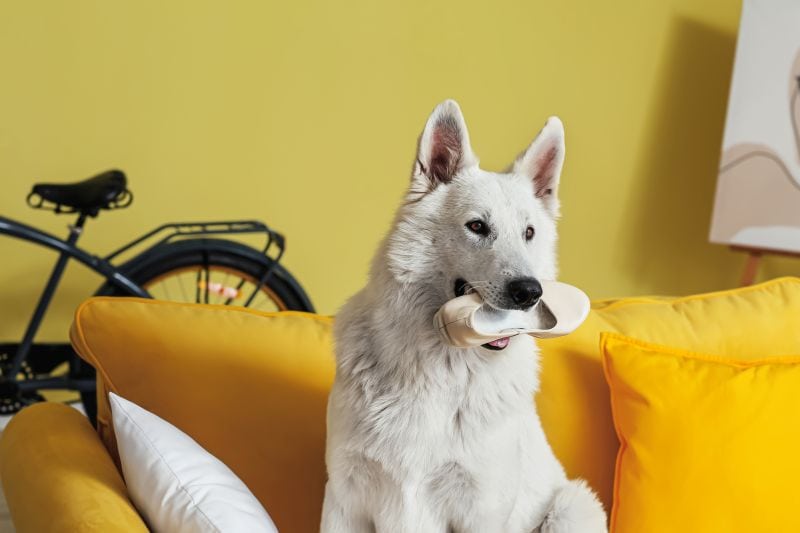
Owning a smart dog isn’t all it’s cracked up to be, with a boatload of problems and special considerations coming with having a canine brainiac around. It’s all fun and games until your German shepherd eats your couch, for example.
Many problems can arise with a pup prodigy around, like:
- Separation anxiety: The smartest breeds tend to be more prone to separation anxiety than others. They’re very sensitive to shifts in routine, and an extra 10 minutes tacked on to your workday might mean coming home to serious damage, because your dog flipped out and ate the blinds, thinking you were never coming back. Dogs suffering from separation anxiety may even injure themselves in the process of panicking, making crate training (and possibly medication) a must for managing it.
- Boredom: A clever canine needs to flex his mental chops daily, or he’ll start inventing brain games for his own entertainment. You won’t always like these “games,” either. He may, for example, decide to chew your stair railing off, or jump through a window screen prison-break style.
- Training headaches: A smart dog can grow bored from a lack of stimulation, but he can also get bored of training. Incessant repetitions are not always ideal for dogs who’re fast learners, so it’s important to create fun, fresh training regimens to keep sharp dogs engaged.
- Mischievousness: Even if you’ve satisfied your smartypants pupper’s basic mental needs, he still may find inventive (and destructive) ways to occupy himself when he has a sliver of free time. He may teach himself how to open doors or the refrigerator, requiring paw-proof locks eventually.
- Working drive: Many of the most intelligent dog breeds have powerful working backgrounds, running livestock across large swaths of land and handling farm work like it’s nothing. They aren’t wired like your average dog and need a regular “job” to remain stimulated and content. And games of backyard fetch may not be sufficient for scratching this kind of itch.
Given these potential pitfalls of super smart dogs, it’s always important to opt for a breed that will work well with your lifestyle.
If you become overwhelmed by caring for your dog and trying to keep his brain stimulated, he’ll likely end up frustrated too. So, set yourself (and your dog) up for success by picking a pup whose intelligence works for life by your side.
Don’t fall into the trap of wanting the brightest doggo in the sky. You might just wind up with a supernova of a problem.
***
Do you have a smart dog at home? What breed? Do you have any of the super smartypants we mentioned? Any all-stars that scored less than favorable? We’d love to hear about it in the comments!


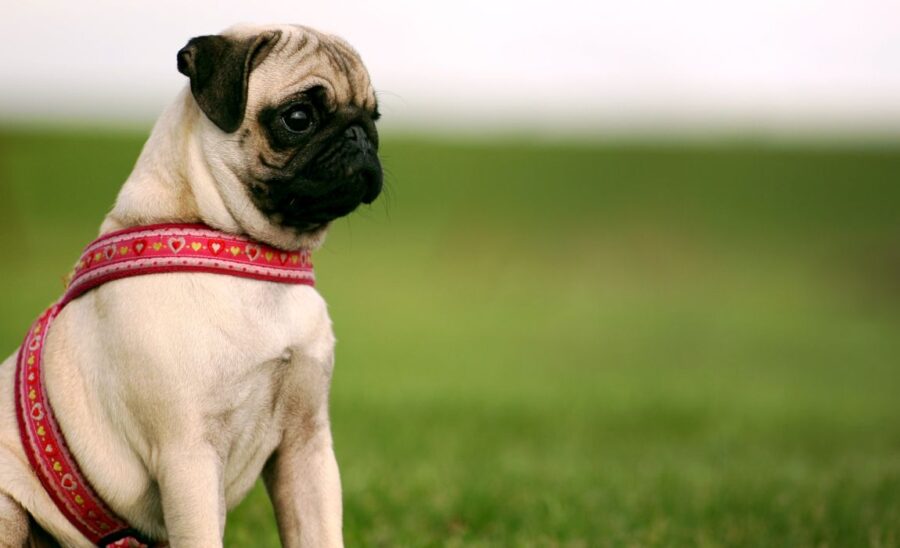


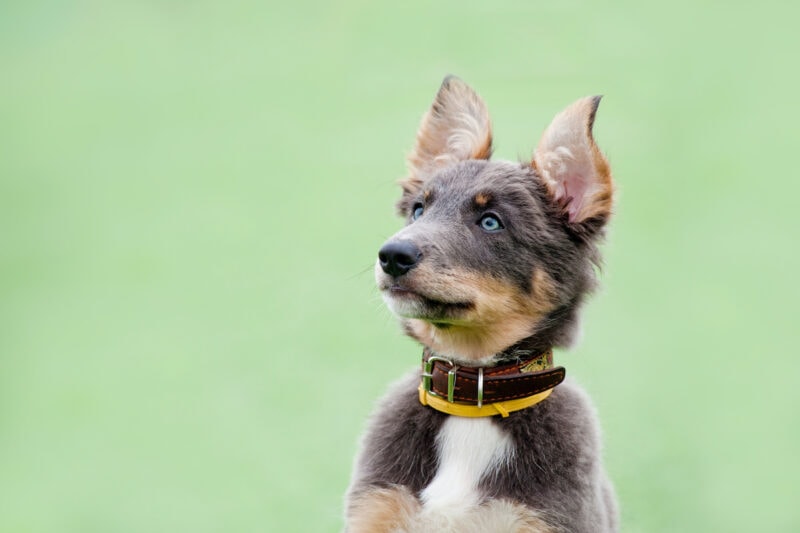
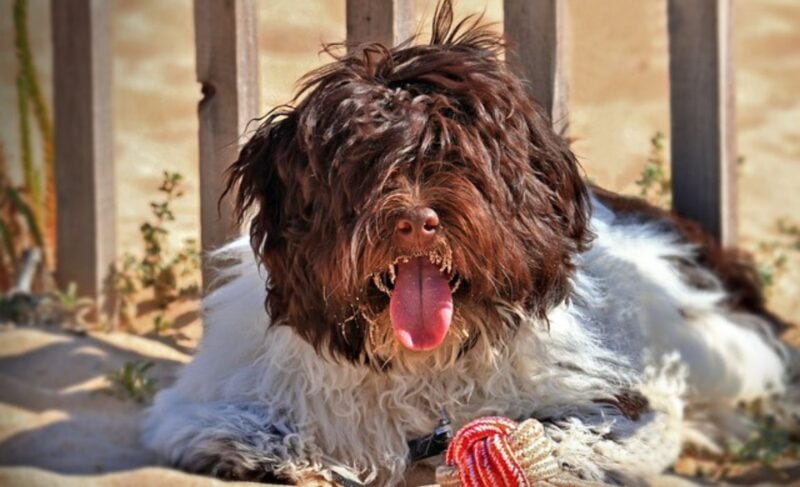

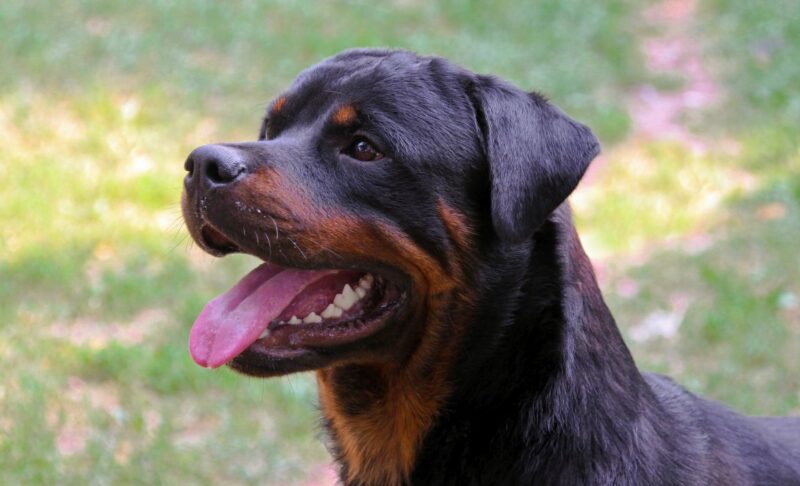
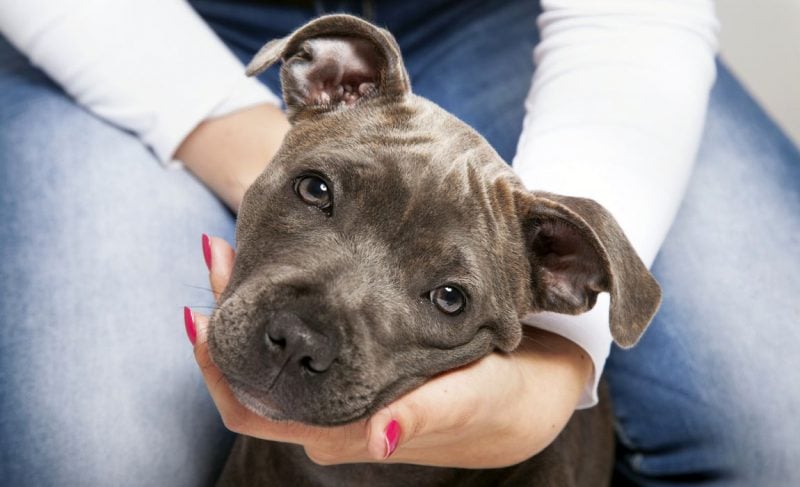
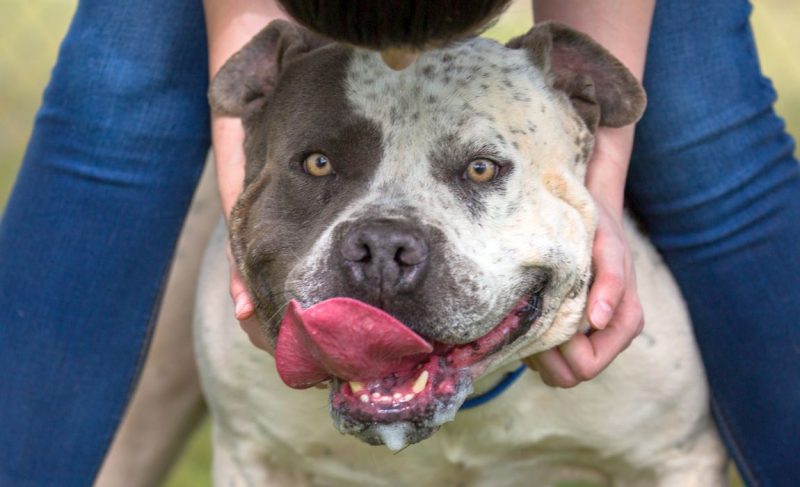
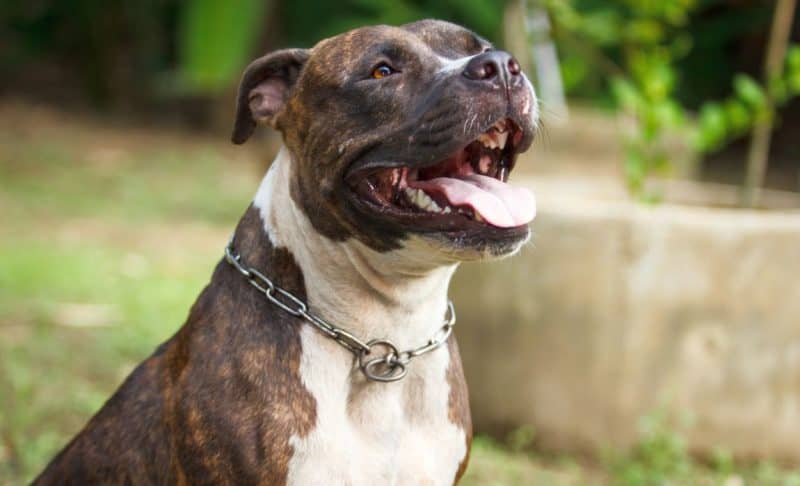

Leave a Comment